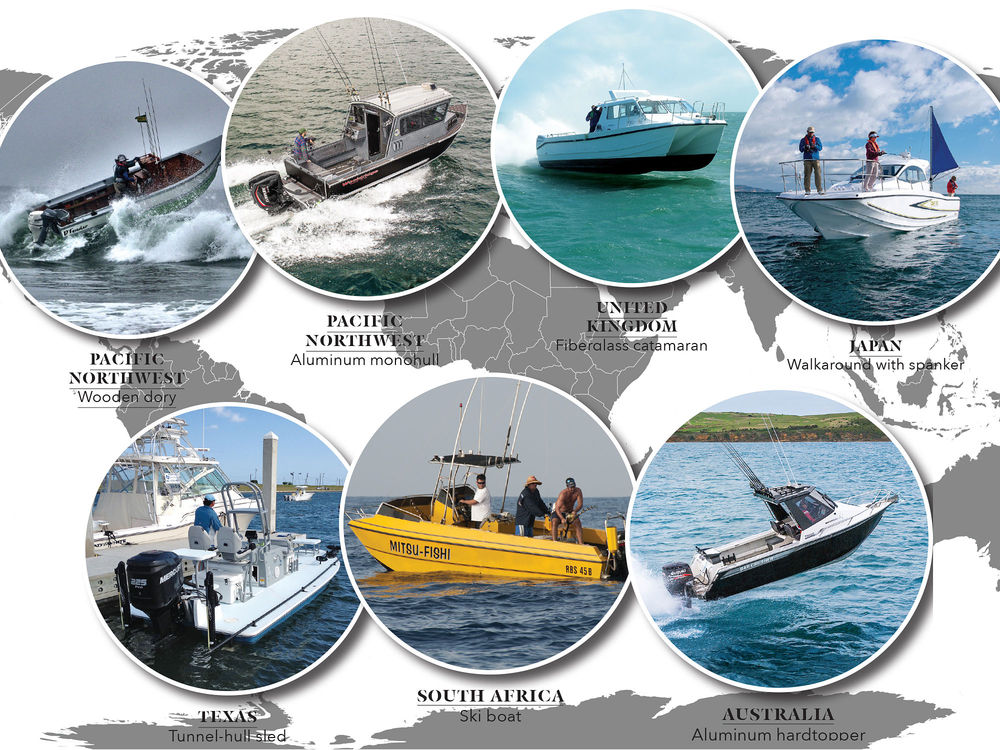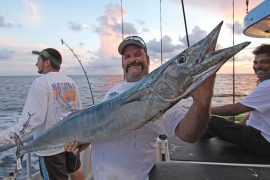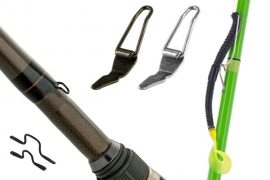
“A fishing boat with a sail? And you call that sail a ‘spanker?’”
My phone conversation with Yamaha’s Jeff Hudson and Ritsu Kadota just turned wildly interesting. I know that anglers around the world board a variety of purpose-built platforms to fish offshore and nearshore, but Yamaha’s walkaround-boat designs — unique to Japan and some with a small sail aft — caught me off-guard.
Ditto the dory. The more I read about Pacific City, Oregon’s iconic dory fishing boats, the more my imagination churned. Pacific City guards the 115-year tradition of dories, which anglers launch off the beach into sometimes-enormous coastal swells.
Fishing and boating, like all things cultural, can vary across states and continents. Recreational anglers in the fishing-centric Southeast United States (like me) prefer a fiberglass center console. But we here do not deal with frigid water temperatures, rocky coastlines, or trailering and launch issues.
To explore some of our global nautical diversity, I queried Sport Fishing contributors and friends, and boatbuilders from around the globe. Here’s just a glimpse of what the rest of the world — and some select portions of our country — call a “fishing boat.”
“Fishing is at the heart of a Japanese person. They live for the salt water,” says Yamaha’s Hudson, the division manager for marine product development who spends a good deal of time in Japan. “The boat designs are quite different. Cabins are really popular. The boats have a high bow rail, and most of the rod holders are up front in the bow.”
Japanese small-boat fishermen use mostly lures and plugs to cast while drifting. Yamaha’s DFR (diesel fishing revolution) walkarounds feature a jutting, squarish foredeck that extends beyond the forepeak. The high bow rail gives anglers a handhold or a leaning post in rough seas.
The average boating angler owns a 20- to 30-foot cabin/pilothouse boat; larger vessels come with inboard power, and smaller ones carry outboards. Yamaha also makes a smaller bay boat with a single outboard as well as larger sport-fishing convertibles and expresses for the country’s burgeoning recreational marlin fishery.
The aft sail — or spanker — available on some models helps Japanese fishermen hold position over a fishing spot, Hudson says. “Instead of just drifting, the boat turns on center. The spanker pivots everything on the center of gravity of the boat.”
The spanker is used in conjunction with the electronic throttle-and-shift, bumping in and out of gear, to create a virtual-anchor effect. The boat hovers despite wind and current. Because anglers usually fish from the bow, the aft sail creates no entanglement hazard.
These Japanese walkarounds also feature a deep, thick keel, which helps stabilize the boat’s track; an extended bow chine improves the dryness of the ride. I couldn’t find information about deadrise and draft, though the vessels appear beamy and flat aft.
Most Japanese fishing boats come with in-sole storage and fish boxes to ice down a fresh catch, Hudson says. A few models also offer release wells, based on Yamaha’s website photography. Rods and reels are generally stowed inside the pilothouse, which can be air-conditioned; many come with a sleeping berth.
The average cost for a 20- to 30-foot recreational fishing boat ranges from $30,000 to $100,000 in U.S. dollars.
Longtime fisherman and Ski-Boat magazine publisher Erwin Bursik lived through the evolution of South Africa’s smaller, beach-launch craft, known as ski boats. In these notes, he described to me this most popular style of recreational-fishing vessel for the region:
“The offshore craft used in South African waters has a long history, adapting from a glorified paddle ski in the 1940s and early 1950s to the largely twin-outboard craft in use today. One of the primary criteria needed during this transition was the craft’s ability to be pushed into the surf off a beach, and then it had to be capable of turning very quickly before taking a breaker to get through the surf line and out to sea.
“As of the present, twin‑hulled, or catamaran-style, craft in the 14- to 20-foot class are being used in the above launch sites. Craft of similar design in the 18- to 30-foot class are being used from semiprotected launch sites as well as harbors. Cat-style hulls make up about 75 percent of the craft up to 30 feet and monohulls the remainder. In line with South Africa’s road-trailering regulations, most craft are less than 8½ feet in width.”
A 20-foot boat listed on the website for Z-Craft, a popular builder in the region, shows a hull weight of about 1,350 pounds and a draft measurement just shy of a foot. Boat reviews talk about a proud bow in and out of the water, boasting a very dry ride.
“Smaller craft are either built with forward-console or center-console configurations, whereas the bigger craft over 24 feet are generally forward consoles with enclosed cabins. The deck layouts are conveniently designed to ensure maximum fishability, and follow your American designs quite closely. Decks must be self-draining, of course, since they often take a wave during surf launches.”
Because of those wet conditions, ski boats often employ a false transom forward of the motors, which encloses the cockpit, Bursik says. Into that bulkhead, which some U.S. designs similarly feature, they install livewells and tuna tubes that they term “luna” tubes.
“Motors are 100 percent outboards for surf-launch boats and range from twin 40 hp to twin 200 hp outboards. Of the craft exiting harbors, the majority use outboards; some use Z-drives and shaft drives, but very few use IPS drives.”
To fuel these engines, about 80 percent of South African boaters use a series of 25-liter plastic containers stowed beneath the cockpit sole, rather than a built-in fuel tank. “Ninety percent of our launch sites are not marina or harbor related, and therefore fuel has to be carried over fair distances,” Bursik says. “It’s easier to do this in the containers than drag a boat long distances to fill directly into inboard tanks.”
Although Bar Crusher builds boats from 16…





